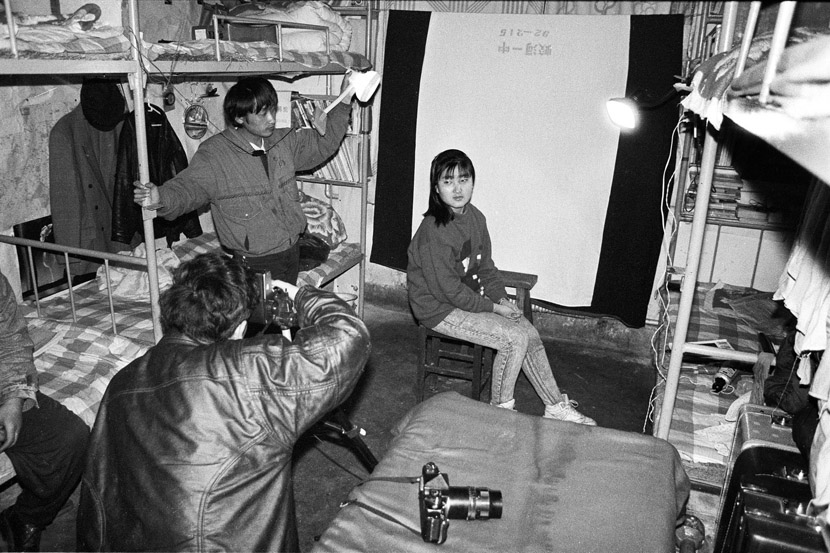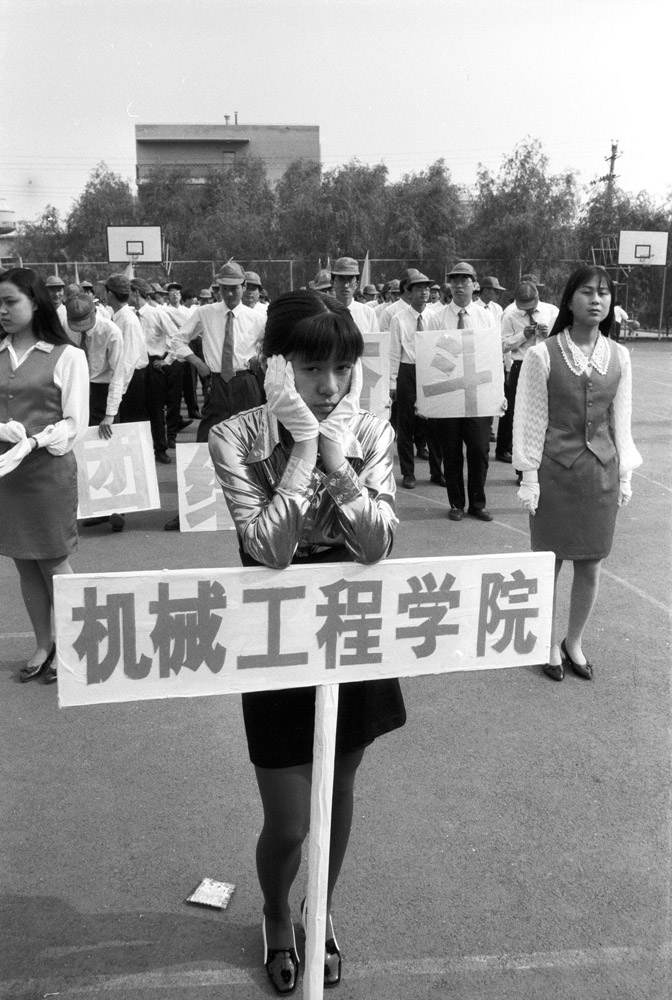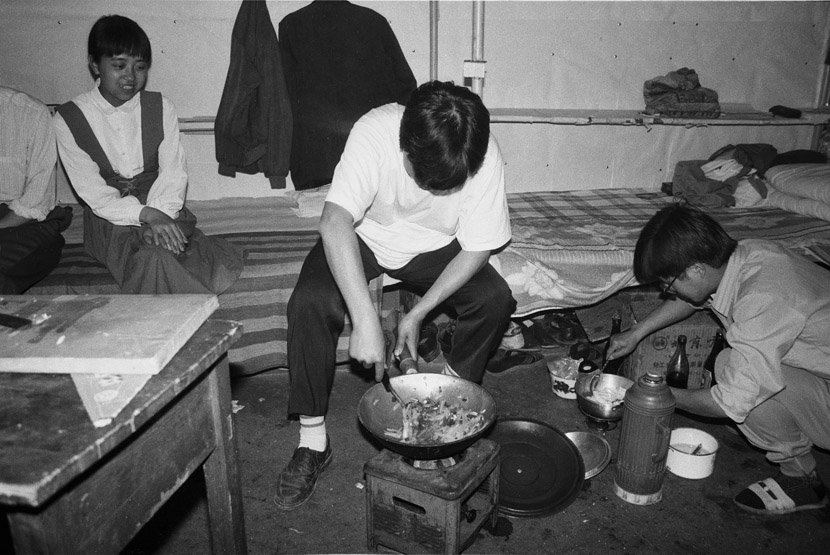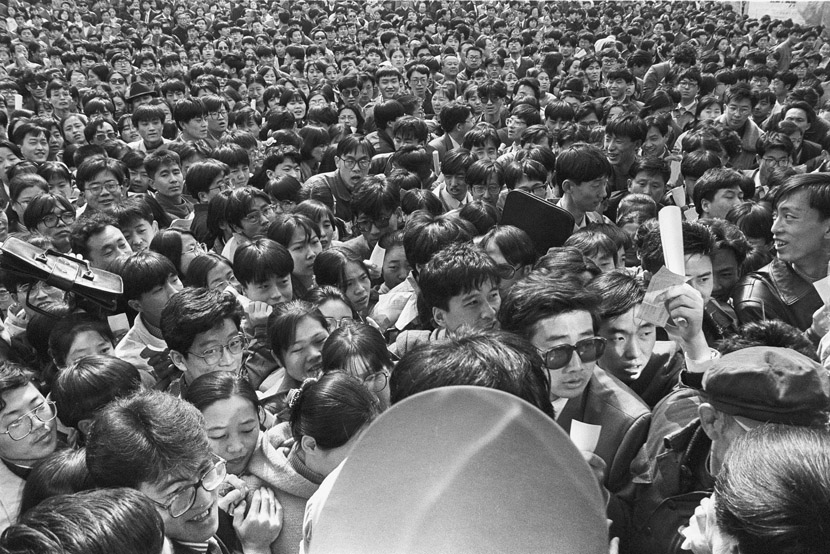
Past Lens: Snapshots of Campus Life in ’90s China
It began at junior high in Harbin, northeastern Heilongjiang province, when my parents bought a camera — the Ricoh XR7. That was in the mid-1980s when this camera cost close to 2,000 yuan (now $300) , making it an expensive and rare consumer product. That was the moment I became indelibly linked to photography.
In 1991, my father showed a photo of a night scene I had taken to Wang Fuchun — a photographer at the Harbin Railway Research Institute at the time, who has also received national awards for his photo series on Chinese people aboard trains.
He saw the picture and said: “This kid’s not bad. Bring him to see me.” And just like that, I began to learn from a real professional.
The following year, I was admitted to the Changchun Institute of Optics and Fine Mechanics (now Changchun University of Science and Technology) in the northeastern province of Jilin. During summer vacation after the college-entrance examination, I often chatted with Wang about photography and studied some of the photos he’d taken.
He gave me some very important advice: “When you go to university, take pictures of your university life. If you want to make a living as a photographer, you have to start with the subject matter around you.”
So before even stepping onto campus, I had already decided to shoot a series of photos documenting almost every facet of my university life, and had begun preparing for it. It culminated into a photo series which was eventually published as a book in 2018 titled “My University.”
If it weren’t for these images, I wouldn’t be able to awaken so many memories based not just on sight, but also sound and smell. When I look at the pictures, I look back at myself.







Campus life 101
Before arriving, I knew little about the university where I was about to spend the next few years. But the photographs I took at that time show me what I was like more than 20 years ago: innocent, vulnerable, sensitive.
And though my education until then was very narrow — I knew little outside the textbooks — in university, I began studying aspects of literature, history, and philosophy that interested me, and that was when I truly began to feel free.
On most days, I walked across the campus, past dormitories, canteens, classrooms, computer centers, and libraries — a life without computers and mobile phones. This is now virtually unimaginable.
That’s how I spent days at university, though all the entertainment began after classes. This largely meant collective activities and events, the most common being dance parties. There were such parties in the student activity room every weekend, by far the liveliest events on campus — imagine dozens of carefree young men and women spinning and shuffling under colorful lights.
The school club showed movies every Wednesday and Saturday, too, where I was a regular. Most films were from the Chinese mainland, Hong Kong, and Taiwan, and the Westerns we saw were usually pretty old. In the mid-1990s, China began to import Hollywood blockbusters and the first one I ever saw was the 1993 hit “The Fugitive.” I was stunned by the sound effects in the film — I had never heard such realistic sounds in a movie before.
There were only a few TVs in the dormitory at that time because they were so expensive. Just a few students were able to scrape together enough money to buy one. Dramas, variety shows, and ball games were our main interests on the small screen.
Also, the 1994 FIFA World Cup — held in the U.S. — was broadcast live but late at night due to the time difference. Then, students moved the TV into the corridor and plugged it into an outlet meant for a lamp. A dozen people gathered in front of the tiny black-and-white TV set.






In the classroom
While life in the dorms was a breeze, in class, I was a little worried about university-level math: I did pretty poorly in this subject in high school. Luckily for me, our head teacher Chen Yujian also taught mathematics.
He was a very experienced teacher who used vivid and humorous metaphors during his lectures, which, when paired with his resounding voice, never failed to seize my attention — I didn’t skip a single class.
But though I had few difficulties with my studies, by the third year, I was completely preoccupied with photography. Sometimes, I furtively read books on art during class, or skipped them altogether to take photos. I lost all interest in my major (measurement and control technology and instruments). I felt like I was in the wrong place and that the subject I was really interested in wasn’t my major.
University studies began to feel like an errand that just had to get done and I often visited the art faculty studio at Northeast Normal University and made friends with students at the Jilin College of Arts.
Taking and developing photos as well as organizing small exhibitions with people who shared the same passion as me are some of my most cherished memories. We’ve rarely been in touch with each other since graduation, but such friendships are like sealed treasures — whenever I take photos of them out of their case, they glisten as brightly as ever.








Behind the lens
I was so firmly fixed on photography that I began spending most of my spare time outside class practicing my craft. I still remember the first picture I took — classmate Wu Shaohua cleaning a window. To my friends, I was special. It was as if taking photos indicated to people that you had a certain professional status, like a journalist. Soon, I joined the university’s Photography Association.
When I was shooting the “My University” series, Wang, the acclaimed photographer, gave me some invaluable guidance. “Your photos are getting better and better, but you’ve had too little experience.” That was in my sophomore year. At the time, I didn’t know exactly what he meant by “experience” — it took me until I was middle aged to gradually understand — practice makes perfect.
Wang’s comments on my photos and his guidance on technical issues also helped me make rapid progress in understanding photography. He was in the midst of producing his “Chinese on the Train” series, and the photos he took at that time were a source of great inspiration to me.
In 1995, I convinced my department to let us use a vacant bedroom as a darkroom. From then on, we had our own little photography paradise where we were free to develop our photos and prepare exhibitions.
From enrollment to graduation, I shot more than 135 rolls of black-and-white film across four years, and this experience gave me plenty of confidence to make photography my career. After graduating, I even found a job at a photo agency.










The long goodbye
In the mid-1990s, university students couldn’t just rely on the government to find jobs, and so from 1994, graduate job fairs became increasingly popular.
At the time, employment was essentially a bilateral decision between companies and students, though the latter still had to respect certain provisions: They could only apply to work for companies in the same system as their universities.
For example, my university belonged to the now-defunct Ministry of Arms Industry, so we could apply for work at companies owned by that ministry. If a student found work at an employer not included on a predetermined list, they had to pay a “training fee.”
Before university tuition fees were reformed, our fees were nominal, and university funding mainly came from companies run by the same ministry. Encouraging students to apply at these companies was the government’s way of compensating them for their funding.
On graduating, I found a job at a news photo agency in Heilongjiang province, so I paid the school a “training fee” of 4,000 yuan.
During those heady days of finding a career, hunting for jobs, and leaving campus, I always took photos of students graduating and bidding farewell, but I didn’t really know what this rite of passage felt like until it happened to me. It only dawned on me in the final term of my fourth year, when classmates began looking for jobs and starting their graduation projects — university life was coming to an end.
Every time a class group graduated, Changchun Railway Station became the scene of solemn farewells. These were largely spontaneous, and I visited the station each year between 1994 and 1997 to capture this on camera.
And on July 6, 1996, I waved goodbye to my own classmates at the same railway station and took pictures as they left. I was crying so hard that I could barely see through the viewfinder.
In the end, it was only on graduating university that I really felt that I’d come of age — that in photography, I’d found myself. By that point, I was confident that I could make a career and a name for myself in this profession.
To this day, I still get confidence from the experience of creating the “My University” series: It taught me that true happiness and freedom comes from focusing on what you love.







A version of this article was originally published by Jiazazhi. It has been translated and edited for length and clarity, and is republished here with permission.
Translator: Lewis Wright; editor: Lu Hua.
(Header image: On a student outing just before graduation, Wang Jinsong and Li Hailan opened up about their relationship, 1996. They had quietly dated for a year without anyone suspecting a thing. Courtesy of Zhao Gang)










